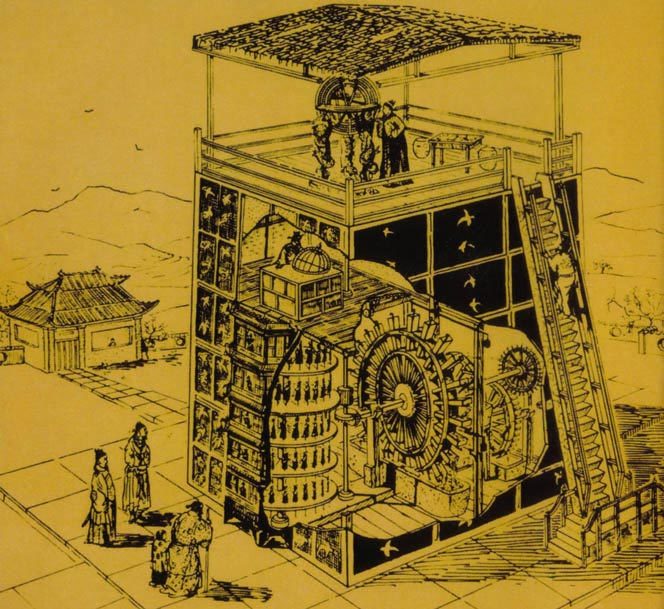Su Song's Cosmic Engine

The Cosmic Engine is an astronomical observatory and clock tower designed by Su Song and Han Gonglian between between 1088-1092 during the Song Dynasty (960-1279). When the capital of the Song Empire was captured by the Jurchens (later called the Manchus) in 1127 the invaders dismantled the Cosmic engine and carted it away to be reassembled in the Kingdom of Jin (which they were unable to put together). Check out the following videos:
Machines of Ancient China skip to 34:18
What the Ancients Knew - China skip to 15:00
No vote yet
1 vote
Easy Math Editor
This discussion board is a place to discuss our Daily Challenges and the math and science related to those challenges. Explanations are more than just a solution — they should explain the steps and thinking strategies that you used to obtain the solution. Comments should further the discussion of math and science.
When posting on Brilliant:
*italics*or_italics_**bold**or__bold__paragraph 1
paragraph 2
[example link](https://brilliant.org)> This is a quote# I indented these lines # 4 spaces, and now they show # up as a code block. print "hello world"\(...\)or\[...\]to ensure proper formatting.2 \times 32^{34}a_{i-1}\frac{2}{3}\sqrt{2}\sum_{i=1}^3\sin \theta\boxed{123}Comments
This reminds me of the "The Long Now" clock.
The Long Now
Log in to reply
Wow! Hope it will tick for 10000 years. I think the clock will wear down due to entropic reasons.
Log in to reply
A pulsar can be said to be a "mechanical thing", it's a solid that spins, isn't it? Yet, how long do you think it's going to keep spinning while keep near perfect time? Some millisecond pulsars are actually more precise than atomic clocks, and they'll still be going even after millions of years. So, while entropy does cause decay, there can still be a great variation of timescales. The Long Now clock can feasibly last far longer than a conventional mechanical clock, unattended, if it's designed right, and if it doesn't get hit by a meteorite.
Nice , so you into Astronomy ?
Log in to reply
Astronomy is cool, but I like physics more.